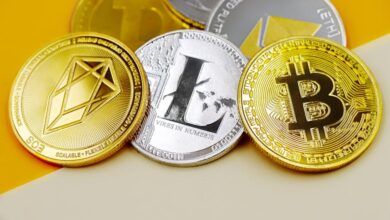Exploring Metallurgy: Key Insights into Metals, Investments, and Sustainable Practices

Metallurgy, the intricate science of working with and refining metals, plays a pivotal role in various industries, from construction and aerospace to automotive and energy sectors. Understanding the fundamentals of metallurgy is essential for anyone looking to navigate the complex world of metals, which can be broadly categorized into ferrous and non-ferrous metals. As we delve into this fascinating field, we will explore the distinctions between precious metals like gold and silver, and base metals such as copper, aluminum, and zinc, along with the growing significance of rare earth metals in modern technology.
In an era increasingly focused on sustainability, innovations in metal recycling and fabrication are reshaping the landscape of metal production, making it crucial for investors and manufacturers alike to adapt to these trends. This article will not only highlight the importance of metallurgy in everyday applications but also provide insights into responsible practices in metal mining and production, paving the way for a more sustainable future. Whether you're interested in gold investing, exploring metal commodities, or understanding the properties of various metal alloys, this comprehensive guide will equip you with the knowledge to appreciate the vital role metallurgy plays in our world.
- 1. The Fundamentals of Metallurgy: Understanding Ferrous and Non-Ferrous Metals
- 2. Precious and Base Metals: Investing in Gold, Silver, and Rare Earth Metals
- 3. Sustainable Practices in Metal Production: Innovations in Recycling and Fabrication
1. The Fundamentals of Metallurgy: Understanding Ferrous and Non-Ferrous Metals
Metallurgy is a fascinating and complex science that deals with the properties, processing, and manipulation of metals. At its core, metallurgy can be divided into two primary categories: ferrous and non-ferrous metals. Understanding these distinctions is crucial for anyone involved in metalworking, whether for industrial applications, jewelry making, or energy solutions.
Ferrous metals, characterized by their iron content, are widely used in various sectors due to their strength and durability. Steel, an alloy of iron and carbon, is the most prevalent ferrous metal, found in construction metals and automotive applications. The properties of ferrous metals make them susceptible to metal corrosion; however, advancements in metallurgy have led to the development of corrosion-resistant alloys and coatings, significantly enhancing their longevity.
On the other hand, non-ferrous metals do not contain significant amounts of iron, making them less prone to rusting. This category encompasses a wide range of materials such as aluminum, copper, zinc, and precious metals like gold and platinum. Non-ferrous metals are essential in areas such as aerospace, energy, and automotive industries, where lightweight and corrosion-resistant materials are crucial. In recent years, the growing demand for battery metals, particularly lithium and cobalt, has spurred interest in non-ferrous metallurgy, especially in the context of sustainable metal production and recycling practices.
Both ferrous and non-ferrous metals can be further categorized into base metals and precious metals. Base metals, such as copper and zinc, are often used in industrial applications and metal commodities. Precious metals, including gold and silver, are typically associated with jewelry metals and investing opportunities. Gold investing and silver investing have gained popularity as individuals seek to diversify their portfolios with these stable assets.
In the realm of metallurgy, metal alloys play a significant role as they combine different metals to improve specific properties such as strength, ductility, and corrosion resistance. For instance, aluminum alloys are extensively used in aerospace and automotive manufacturing due to their lightweight nature and strength.
As metal trends evolve, the integration of innovative technologies, such as 3D printing metals, is revolutionizing the way we fabricate and utilize metals. These advancements not only enhance efficiency in metal mining and production but also pave the way for sustainable practices within the industry, reducing waste and promoting metal recycling.
Understanding the fundamentals of metallurgy, particularly the differences between ferrous and non-ferrous metals, is essential for professionals and enthusiasts alike. This knowledge not only informs material selection but also plays a vital role in the future of metal production and application across various industries.
2. Precious and Base Metals: Investing in Gold, Silver, and Rare Earth Metals
Investing in metals has become increasingly popular as they are viewed as a stable asset class that can hedge against inflation and economic uncertainty. Within this realm, metals are broadly categorized into precious metals and base metals, each serving different purposes and markets.
Precious metals, such as gold and silver, are often sought after for their intrinsic value and rarity. Gold investing has long been a favored strategy for wealth preservation. Its historical significance as a store of value makes it a go-to asset during times of economic volatility. Similarly, silver investing attracts attention due to its dual nature as both a precious and an industrial metal. Silver's extensive use in electronics, solar panels, and jewelry metals highlights its importance in various sectors, making it a compelling choice for investors.
On the other hand, base metals like aluminum, copper, and zinc are critical to industrial applications and construction. These metals, often referred to as industrial metals, are essential in metal fabrication and the production of metal alloys that are used in everything from automotive metals to aerospace metals. The demand for base metals is closely tied to economic growth, making them a significant focus for investors looking to capitalize on market trends.
Rare earth metals, a category of base metals, are essential for modern technology and energy production. These metals, including lithium, platinum, and palladium, play a crucial role in the manufacturing of batteries, electronics, and various high-tech applications. The limited supply and increasing demand for these materials have positioned them as vital components of sustainable metal production efforts.
Metal mining and metal recycling are also integral to the industry, ensuring a steady supply of both precious and base metals. With rising concerns about metal corrosion and the environmental impact of mining, sustainable practices are becoming more critical. The focus on eco-friendly metal production methods and the recycling of metals are reshaping the landscape of the metallurgy sector, promoting a circular economy.
Overall, the dynamics of investing in metals—whether precious or base—continue to evolve. As technology advances and new applications emerge, investors must stay informed about metal trends and the implications of global market changes on metal commodities.
3. Sustainable Practices in Metal Production: Innovations in Recycling and Fabrication
Sustainable practices in metal production are increasingly vital as the demand for metals continues to rise across various industries, including construction, aerospace, and automotive sectors. Innovations in recycling and fabrication are leading the way toward a more sustainable future in metallurgy, significantly impacting the lifecycle of both ferrous and non-ferrous metals.
One of the most promising areas of advancement is metal recycling. The recycling of precious metals, such as gold and silver, as well as base metals like aluminum, copper, and zinc, not only conserves natural resources but also reduces energy consumption and greenhouse gas emissions associated with traditional metal mining. For instance, recycling aluminum saves up to 95% of the energy required to produce aluminum from raw bauxite ore. This is particularly crucial when considering the rising importance of energy metals like lithium and cobalt, which are essential in battery production for electric vehicles and renewable energy storage.
Moreover, innovations in metal fabrication techniques, including 3D printing metals, are revolutionizing how metals are utilized. This method allows for the creation of complex structures with less material waste, which is particularly advantageous in industries such as aerospace and automotive. By optimizing designs and using only the necessary amounts of metal alloys, manufacturers can minimize the environmental impact and enhance the sustainability of metal commodities.
Another noteworthy trend is the focus on developing new methods for extracting rare earth metals and refractory metals, which are critical for high-tech applications. Sustainable metal production practices are being implemented to ensure that metal mining operations adhere to stricter environmental standards, thereby mitigating metal corrosion and habitat destruction.
Ultimately, the evolution of sustainable practices in metallurgy not only benefits the environment but also presents investment opportunities in metal commodities. For instance, gold investing and silver investing are increasingly appealing to those looking to combine financial gains with ethical considerations. As the industry progresses, the integration of sustainable practices will likely influence future trends in metal production, ensuring that the needs of current and future generations can be met without compromising the health of our planet.
In conclusion, the shift towards sustainable metal production through enhanced recycling techniques and innovative fabrication processes marks a significant step forward in the metallurgy field. As we continue to explore and implement these practices, the impact on both the environment and the economy will be profound, paving the way for a greener future in metal use across all sectors.
In conclusion, metallurgy plays a vital role in our modern world, shaping the materials that drive numerous industries, from construction to aerospace. By understanding the fundamentals of both ferrous and non-ferrous metals, we can appreciate the unique properties that each type offers, whether it's the strength of steel, the lightweight nature of aluminum, or the corrosion resistance of specialized alloys. The investment potential in precious metals like gold and silver, along with the growing importance of rare earth metals, highlights the dynamic nature of metal commodities in today’s economy.
Moreover, as we face environmental challenges, the push for sustainable metal production is more crucial than ever. Innovations in metal recycling and fabrication not only reduce waste but also conserve valuable resources, ensuring that metals remain available for future generations. As trends in the industry evolve, including the rise of 3D printing metals and the demand for battery metals such as lithium, it is evident that metallurgy will continue to adapt and thrive.
Whether you're involved in metal mining, investing in precious metals, or utilizing industrial metals for various applications, understanding the intricacies of metallurgy is essential. By staying informed about developments in this field, we can foster a more sustainable and efficient future in metal production and usage. Embracing these changes will not only benefit industries but also contribute to a greener planet as we forge ahead into a new era of metallurgy.





